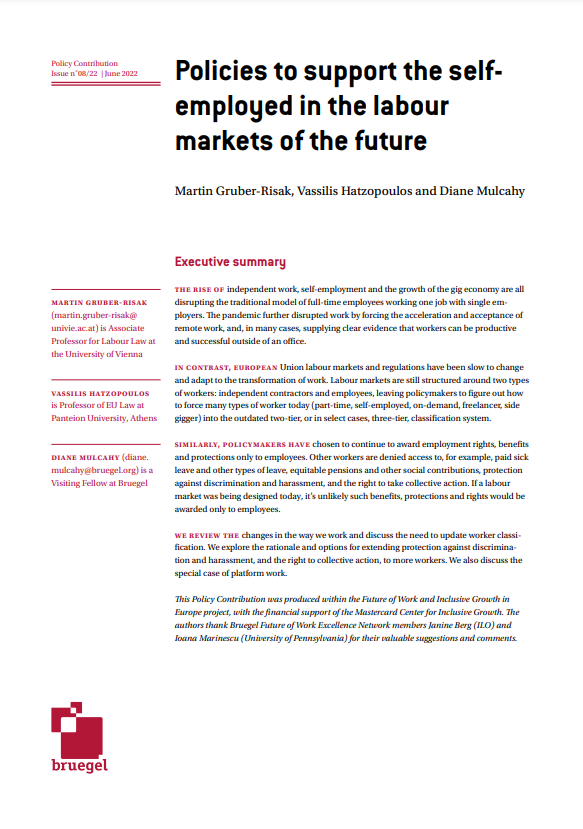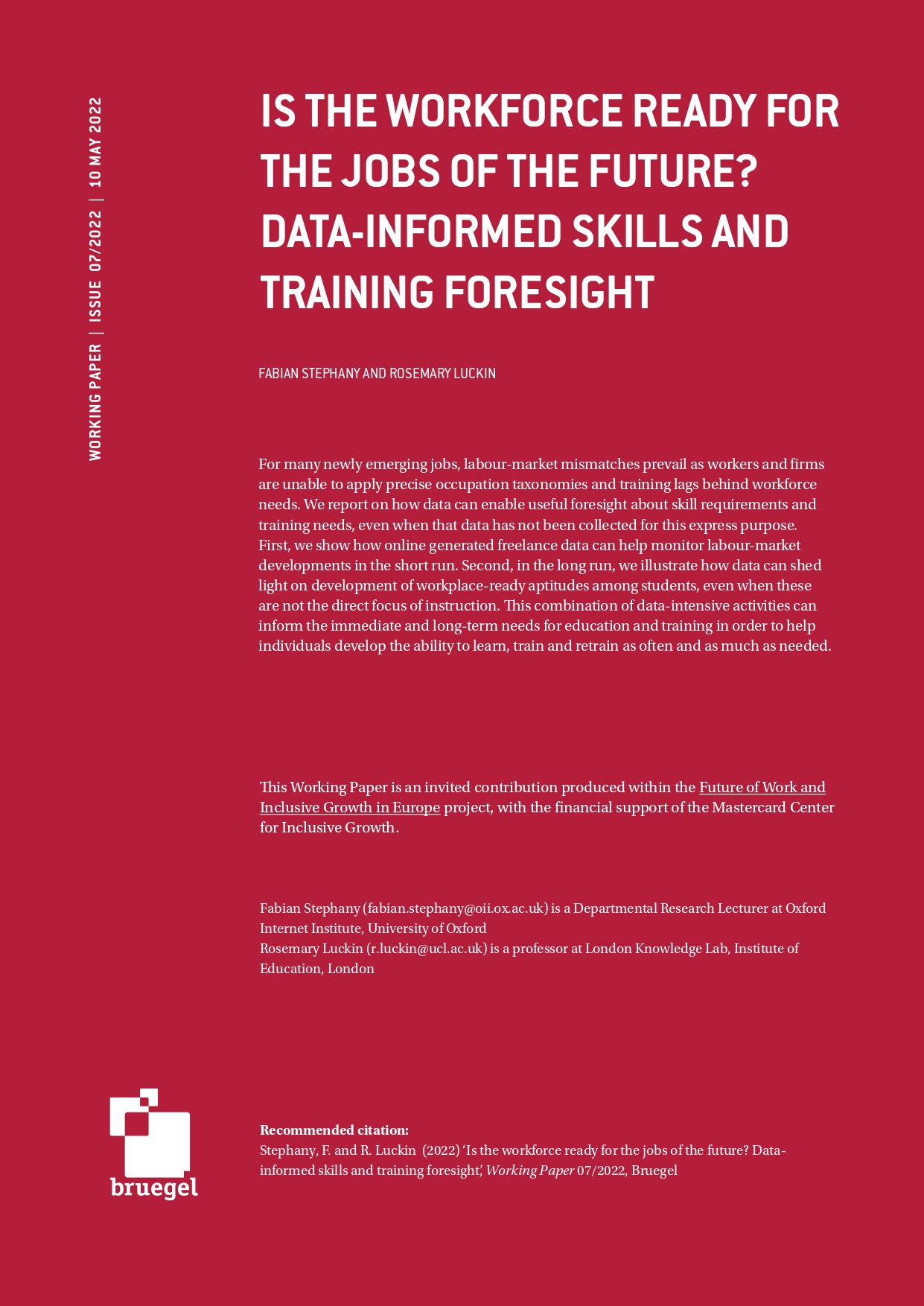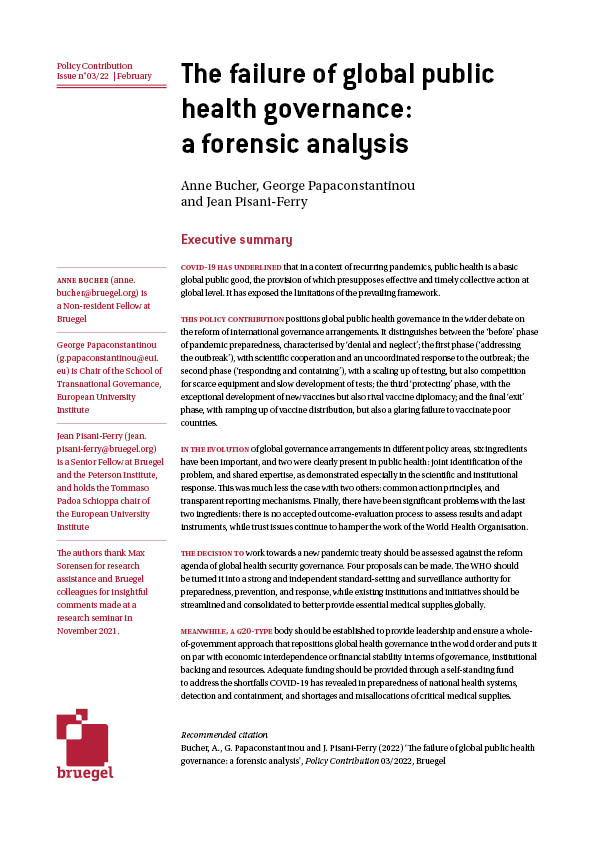Blog Post
Fair vaccine access is a goal Europe cannot afford to miss
COVID-19 vaccination campaigns in the fastest-moving countries show signs of reinforcing inequality. European Union countries can avoid these pitfalls.
Europe has so far been slow to vaccinate its people against the coronavirus, lagging far behind the United States, the United Kingdom and Israel. Slowness in the rollout of the vaccination campaign is frustrating. But it might give European countries an opportunity to learn from, and avoid, the mistakes of the front-runners.
A growing body of evidence suggests that where vaccination is well under way, the way vaccine are distributed and accessed is exacerbating inequality. Poorer, less-educated people, who lack access to or familiarity with digital infrastructure, get their jabs later than their richer, educated, digitally-savvy peers.
This is all the more problematic because the pandemic has hit the poor harder. A US study found that two-thirds of children seriously ill from COVID-19 were either Black or Hispanic, a group that makes up only 39% of the US population under 15. In the US, 4.4 million households with children did not have consistent access to computers for online learning during the pandemic. In Europe, the concentration of teleworking opportunities among tertiary-educated workers has widened the income gap, with most job losses during the pandemic falling on low-wage, low-educated workers.
Fairness and common sense thus suggest that, if anything, vaccine distribution should prioritise the poorest. Where rollout has been fastest, the opposite has happened.
In Israel, Jewish Israelis travelled to Arab towns to get shots that risked being discarded because they were unused. Distrust of the government and poor access to information on the safety of vaccine’s safety among Arab Israelis have been blamed for that outcome: by mid-February, only 23% of Arab-Israelis had received their first vaccine jab. In the United Kingdom, people older than 80 are half as likely to get vaccinated if they are Asian, Black or of mixed ethnicity, compared to white people. In the US, whether at county or city level, vaccination rates are higher in richer, predominantly white areas (controlling for demographic variables such as age population distribution). In New York State, only 7.9% of individuals who received at least one vaccine dose are African American (a group that makes up 18.1% of the eligible population).
Many factors can explain these disparities: minorities tend to be wary of public institutions and trust the government less, often for good reasons (there are plenty of episodes of medical research having a racist bias, for example). Low-income households tend to be less able to access and process accurate health-related information, are more exposed to misinformation and are generally less aware of the positive benefits/risks trade-off of vaccines. For example, 95% of respondents to a 2017 Pew survey reporting a family income above $50,000 indicated that benefits outweigh risks when it comes to childhood vaccines for measles, mumps and rubella. The proportion drops to 79% for respondents with family incomes of $30,000 or below. Individuals who cannot access the internet or do not possess basic digital skills are cut-off from information campaigns and, most importantly, are penalised when vaccination slots must be booked online.
Lessons from the US
Similarly to the EU, US vaccines are purchased at federal level before being allocated to the states, which are then responsible for their distribution. Some states have been more successful than others in rolling out these campaigns: Alabama lags significantly compared to New Mexico and Alaska, for example. Figure 1 plots for Ohio and North Carolina the vaccination rates of counties relative to median household income, fast internet access and level of education.
Figure 1: COVID-19 vaccination rates in Ohio and North Carolina
Counties with lower-income households, lower proportions of educated individuals and less access to fast internet have lower vaccination rates. A difference of 1 percentage point in the proportion of residents with college education is associated with increases in vaccination rates (per population over 65) of 1.3 (North Carolina) to 1.9 (Ohio). In Ohio, 119 vaccine doses have been administered for every 100 people over 65. But for below-median counties in terms of college education, that number drops to 93 per 100. For counties that are below median in terms of number of households with fast internet access, the number is 99. In counties that are below median on all three variables, only 88 vaccine doses have been administered per 100 people over 65 – a 26% shortfall against the state-wide average (it should be pointed out that internet access, income and education are themselves highly correlated).
Implications for the European Union
Figure 2: Levels of (a) income per capita, (b) share of population with college education and (c) share of individuals who access internet daily (100 = national average) in the EU
Source: Bruegel based on Eurostat.
Figure 2, panels (a) to (c), show variability across the EU in terms of income, education and frequency of internet use. Within-country variability is strong in all cases. In terms of college education there is a frequent capital region versus the rest of the country divide, while income inequality is especially strong in Spain, Italy, Romania and Bulgaria. Internet access is less equal in France, Ireland, Germany and Poland.
There are many other variations within EU countries, such as between rich areas in cities, peripheries and rural areas. As COVID-19 vaccines become accessible to more of their populations, therefore, EU countries will increasingly be confronted with the challenge of guaranteeing that poor communities and minorities are not left out or placed at the end of the queue. So far, EU countries have dealt with vaccine distribution in different ways without necessarily ensuring that the least resourced or least digitally-savvy are not left behind.
For example, in some countries the people to be vaccinated are called by their health providers. In other countries, eligible people are asked to pro-actively book appointments through apps, websites or on the phone. In Belgium, individuals eligible for vaccination receive letters in the post and must then register online to confirm their availability. In Germany, where the Länder are responsible for the delivery of the vaccine, call centres were initially overwhelmed by the number of calls and redirected people to online booking solutions. A web portal used by five German Länder forces visitors to go through 10 online steps and two-factor authentication: a cumbersome process, especially for the elderly. In Slovakia, a telephone line has been established for those who cannot book a vaccine slot online; however, the Ministry of Health has signalled that the line is overloaded and older applicants are struggling to find free dates to get their jabs.
Ensuring equal access to vaccines is not only morally right. It also has critical efficiency consequences, particularly for EU countries’ healthcare systems. The marginal positive impact on the healthcare system of vaccinating younger, educated, richer individuals is less than that from vaccinating older, poorer, more vulnerable individuals. The latter are more likely to be hospitalised and their vaccinations are thus more likely to reduce the burden for hospitals in terms of number of patients to be treated.
With the COVID-19 pandemic, time is critical, and certainly insufficient for implementation of more structural solutions to inequalities. EU countries should be ready to adopt quick short-term solutions that can make vaccine access more equal. National vaccine distribution plans should include three priority measures:
- Communication. Vaccine awareness campaigns must be tailored to reach different communities, overcoming language, cultural and religious barriers. Religion, upbringing, migration status, language and perceived biological differences can be major obstacles to immunisation campaigns within ethnic minorities. Vaccine communication should thus address those beliefs, with input from sociologists, anthropologists and psychologists who have specific expertise related to the targeted community. Campaigns should be adapted to local circumstances.
- Engagement. Vaccine rollouts should rely on distributed networks of mediators who are trusted by communities, including family doctors, religious or community leaders, teachers and respected figures who are part of the targeted communities. Such mediators can bridge the trust gap between minorities and centralised public health systems.
- Fair queuing. Vaccine booking systems rely on digital access. Even if phone booking is allowed, those who master online applications usually enjoy an advantage. Vaccine distribution systems must overcome this first-come-first-served Fairer solutions have been proposed: online booking systems could continuously collect applications for slots. When slots become available, the system can use algorithms that blend randomness with priority criteria based on the characteristics of the applicant. For example, two applicants aged 75 would have priority over younger applicants, but the order between them would be randomly determined, if they do not differ significantly in terms of their vulnerability to the virus.
These measures are not costly, especially relative to overall vaccination costs and the economic costs of delaying the immunisation of the whole community. And there is no reason to think that fairness will come at cost of speed: slot-allocating online booking systems complemented by community engagement programmes and targeted communications strategies can even speed up distribution by making it easier for individuals to participate: such systems can help avoid hiccups in allocation mechanisms and ensure that vaccine stocks are fully used, minimising wastage.
European countries are still on time to avoid vaccine social stratification. This is not only imperative from a fairness point of view. Ensuring that everyone, particularly those hit harder by COVID-19, has access to vaccination on an equal basis is a mandatory condition for the pandemic to end.
This blog was produced within the project ‘Future of Work and Inclusive Growth in Europe’, with the financial support of the Mastercard Center for Inclusive Growth.
Recommended citation:
Guetta-Jeanrenaud, L. and M. Mariniello (2021) ‘Fair vaccine access is a goal Europe cannot afford to miss’, Bruegel Blog, 4 March
Republishing and referencing
Bruegel considers itself a public good and takes no institutional standpoint. Anyone is free to republish and/or quote this post without prior consent. Please provide a full reference, clearly stating Bruegel and the relevant author as the source, and include a prominent hyperlink to the original post.








